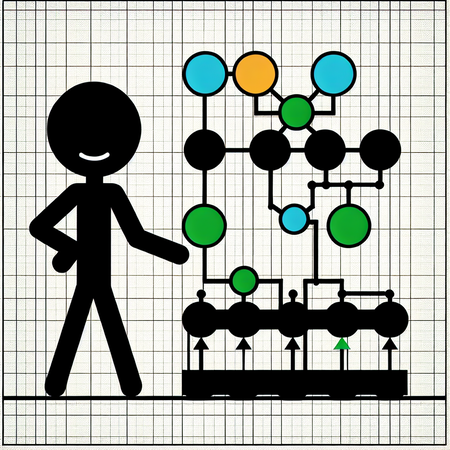Often we need to implement State Machines to encapsulate object behavior depending on a given object state. This can be cumbersome as it often leads to a lot of interfaces and implementation classes, and persisting such an object state often leads to problems, as we would need to implement a Hibernate custom type for instance to solve it.
Today i want you to show another approach. We model a State Machine using a Java Enum. The Enum concept fits better to the State Machine concept, and Java Enums are much more like an enumeration, they can also contain behavior!
This is a simple State Machine implemented using plain Java Enums:
package de.mirkosertic;
public enum State {
INITIAL {
@Override
State doSomething(String aParameter) {
System.out.println("Doing Something in INITIAL state and jumping to NEXT_STEP, argument = " + aParameter);
return NEXT_STEP;
}
},
NEXT_STEP {
@Override
State doSomething(String aParameter) {
System.out.println("Doing Something in NEXT_STEP and jumping into FINAL, argument = " + aParameter);
return FINAL;
}
},
FINAL {
@Override
State doSomething(String aParameter) {
System.out.println("I am in FINAL state, argument = " + aParameter);
return this;
}
};
abstract State doSomething(String aParameter);
}The State Machine has three states, INITIAL, NEXT_STEP and FINAL, and every state has an Implementation of the doSomething() method. which takes an argument and depending on the argument it can jump to the next state.
This is a small piece of code to show the usage of such a State Machine:
package de.mirkosertic;
public class StatefulObject {
private State state;
public StatefulObject() {
state = State.INITIAL;
}
public void performRequest(String aParameter) {
state = state.doSomething(aParameter);
}
public static void main(String[] args) {
StatefulObject theObject = new StatefulObject();
theObject.performRequest("Hello");
theObject.performRequest("Hello");
theObject.performRequest("Hello");
theObject.performRequest("Hello");
theObject.performRequest("Hello");
}
}Using Enums to model State Machines fits better than Interface/Implementation classes, and also an Enum can be easily persisted using Hibernate Enum types. Also, we have implemented the CQS principle and increased test-ability a lot.
Stay tuned! If you want to see more of such cool guidelines, please consult Vaughn Vernon excellent book Implementing Domain-Driven Design.
Git revision: 2e692ad
